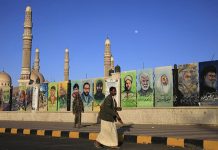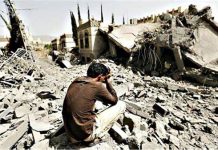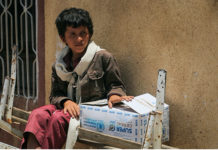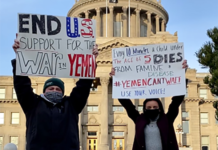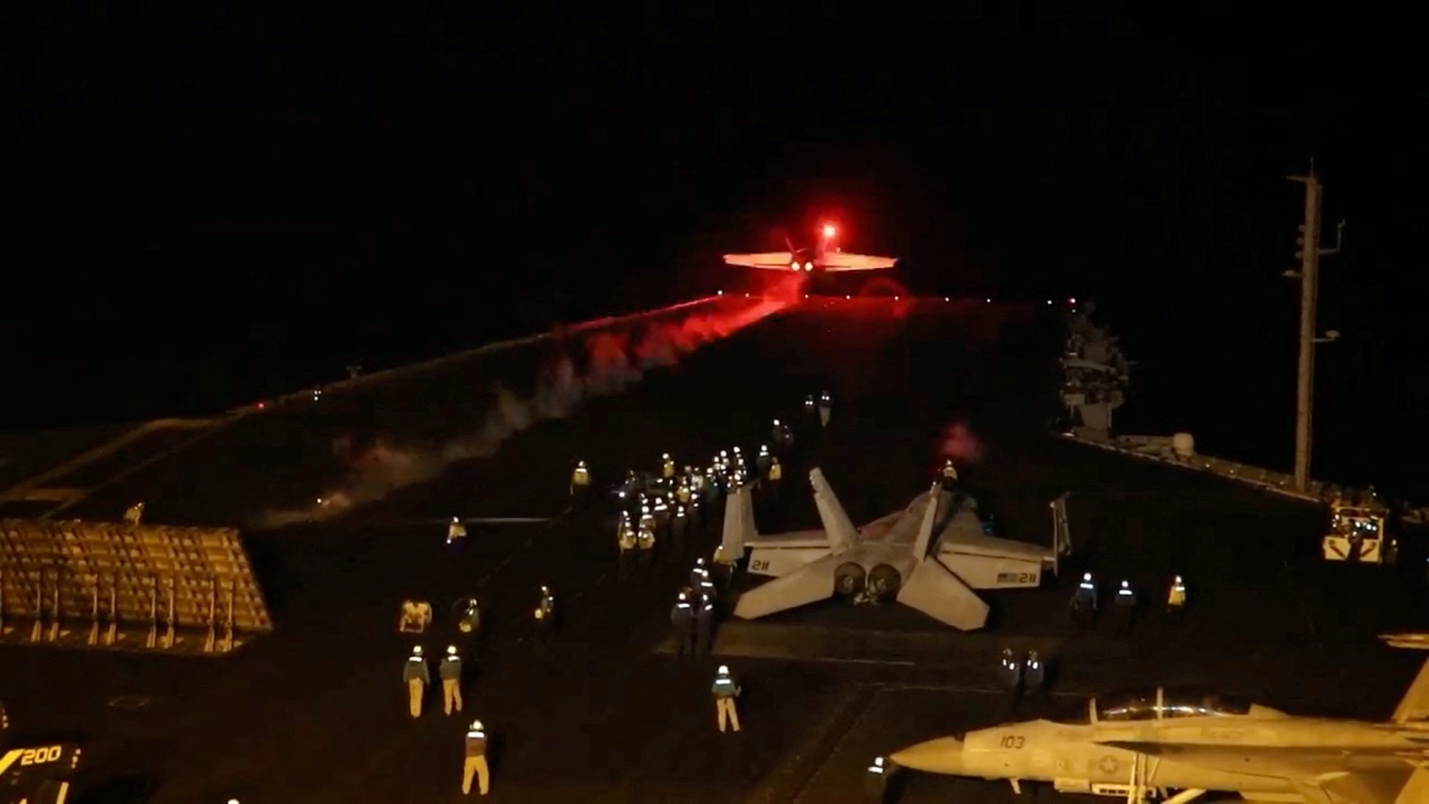
The U.S. war against Yemen is slowly but surely heating up. With more and bigger bombs the U.S. is doing the only thing it knows how to do when what it is doing is not working, something even Joe Biden has admitted.
Some might think this story started on October 7, 2023, when the Palestinian resistance in Gaza attacked the Israeli occupation forces. Israel launched its genocide against Gaza and the Houthis/Ansarallah in Yemen responded by declaring a blockade of Israeli shipping through the Bab al-Mandab Strait, the critically strategic chokepoint connecting the Red Sea to the Indian Ocean through which passes most of the commerce between Europe and Asia.
But U.S. bombs, dropped from U.S.-made planes, were slaughtering tens of thousands of Yemenis from 2015 to 2022 in what was really a U.S. proxy war fought by Saudi Arabia. U.S. bombs dropped by U.S. planes, the only difference was the pilots back then were Saudi. Today its U.S. pilots slaughtering Yemeni women and children.
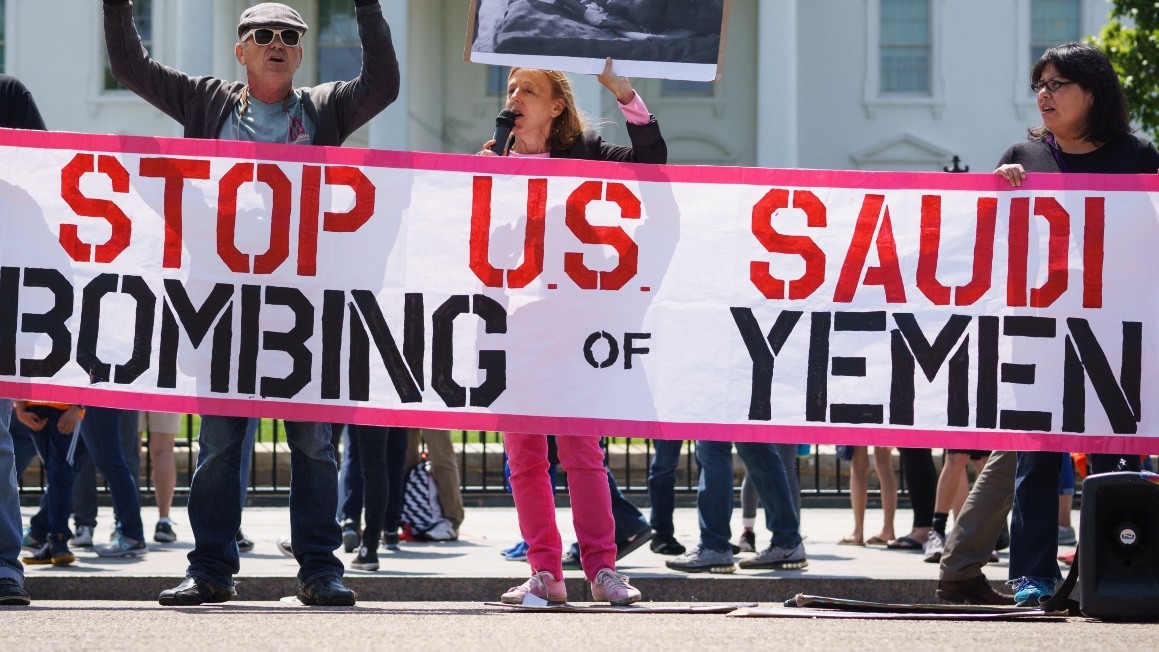
The question is how did all this come to be, where U.S. pilots are massacring Yemeni civilians on behalf of…Israel? U.S. high explosives had been slaughtering Yemeni wedding parties with drone-launched missiles since Obama was president and his Tuesday morning breakfast meetings where he chose which Yemenis were going to die that day in the name of the rules-based U.S. “war on terror.”
Having yet to find anything accurate about how the U.S. war against Yemen happened, it was time to set the record straight. To do this one has to go back 60+ years and then work your way up to today.
In the early 1960s Egyptian President Gamal Abdel Nasser decided that the ongoing chaos in Yemen after the Western colonialists pulled out in the 1950s was something his version of Pan-Arabism should do something about. In response to Saudi Arabian backing of royalist forces in Yemen, backed also by the U.S. and Israel, he embarked on a huge disaster, invading Yemen in what quickly turned into a quagmire in what has been called Egypt’s Vietnam.

Some 30,000+ casualties later by the end of the 1960s, President Nasser had learned his very bitter lesson and pulled Egyptian troops out of Yemen. What Nasser thought was a political problem was actually, in his words, “a tribal problem” and he washed his hands of the whole matter. Some believe the Egyptian invasion of Yemen so weakened the Egyptian army that the Israelis had an easy time of it when they launched their war against the Arabs in 1967, the “Six-Day War.”
Yemen eventually split into North and South Yemen with the northern tribes, today’s Houthis/Ansarallah existing in an uneasy—and often broken—peace, with the Sunni-based southern tribes
This was before the collapse of the Soviet Union, so superpower contention was a constant fact of life. To an extent the U.S. supported Nasser’s war in Yemen, behind the scenes, though Pan-Arab nationalism was not something Pax Americana was comfortable with.
When Nasser pulled his army out, the U.S. and UK promoted their “crisis management” policy, creating one crisis after another the better to loot, plunder and, especially, control Yemen which sits on one side of the Bab al-Mandab Strait.

From the 1970s on a divided Yemen, North and South, seemed to be eternal, or so all the “experts” thought.
Then out of the blue a sudden rush to unite North and South Yemen into one country took place in 1990. It happened so quickly that the U.S. and its lackeys in the UK were caught with their pants down and, before they could sabotage this peace process, it was a done deal.
The reason this happened, and any Eritrean with even basic knowledge of history will tell you, it was the Eritrean People’s Liberation Front (EPLF) in 1990 that brought both parties together in a room for a few weeks and brokered a deal that united Yemen. Mind you, the EPLF in 1990 was still an independence movement and had not yet won independence for Eritrea from the colonial Ethiopian occupation, so all the more impressive an accomplishment.
Of course, once the U.S. heard about this deal it quickly played its carrot-and-stick routine with the new President of Yemen, Ali Abdullah Saleh, and peace and prosperity for a united Yemen was still-born.
Over the next decades the al-Houthi family and its allied tribes, today’s Ansrallah, and the Yemen army headed by President Abdullah Saleh fought at least four wars, some say six. No one won any of these bloodlettings with both sides each time accepting an uneasy truce due to having fought to mutual exhaustion.
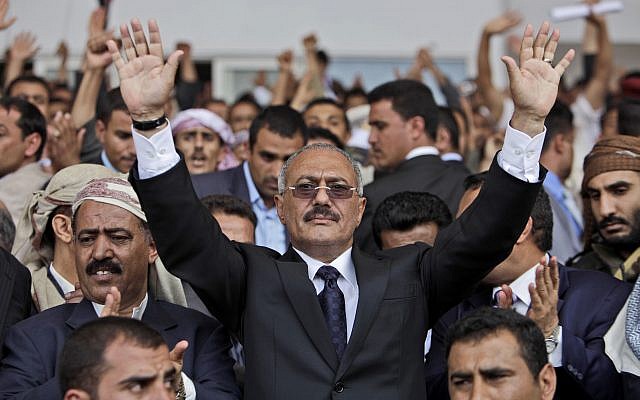
Then, at the end of 2014, the al-Houthi/Ansarallah armed forces made a deal with the head of the Yemen army, son of “ex-President” Abdullah Saleh and set off to take over all of Yemen at gunpoint. This deal combined the military might of Yemen’s two largest armies and it looked like Yemen’s North/South unity was about to be done in.
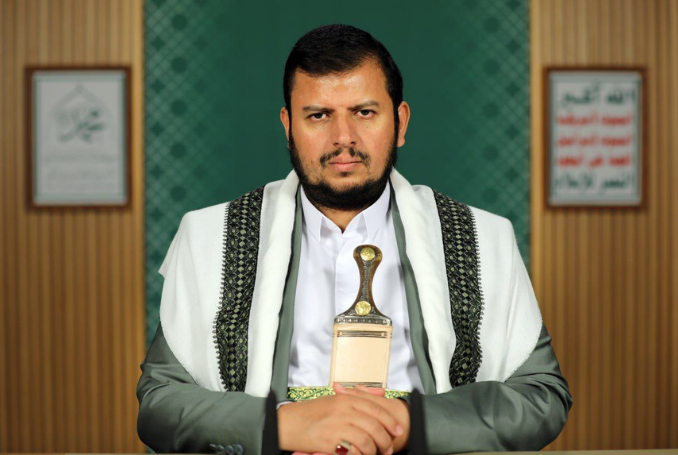
This all caught the National Security Establishment in the U.S. napping and, in the frantic aftermath of the Houthi/Ansarallah/Yemen army invasion of the south, the U.S. turned to the only ground force available to block the Houthi-Abdullah Saleh fighters from victory, and a reluctant Saudi Arabia was dragged into this morass.
How do we know this? Because there was no way the Saudi army did not know all too well the bitter lessons Egypt learned the hard way about intervening in Yemeni tribal quarrels. So Saudi pilots, trained, armed and re-fueled by the U.S. military, began bombing Yemen. Of course, the “Iran-backed Houthis” bogeyman was promoted as a good enough reason.
With Saudi involvement what looked like an easy de facto coup by the Houthi/Saleh alliance came to a halt and, for a time, they were on the back foot, forced to retreat.
Saleh then tried to make his own deal with the Saudis and quickly discovered just how ruthless Ansarallah/Houthis could be toward those they viewed as traitors and while, attempting to flee the Yemen capital of Sana’a, was killed. What happened to his remains is anyone’s guess. Someone who spent decades ruling Yemen just disappeared instantly from Yemen’s reality.
Over the course of the seven years of U.S./Saudi war against Yemen, the Saudi air force massacred hundreds of thousands of Yemen’s people until the war came to an end in 2022, thanks to Chinese intervention that brought the Saudis together with the Iranians to hammer out a rapprochement between once bitter foes.
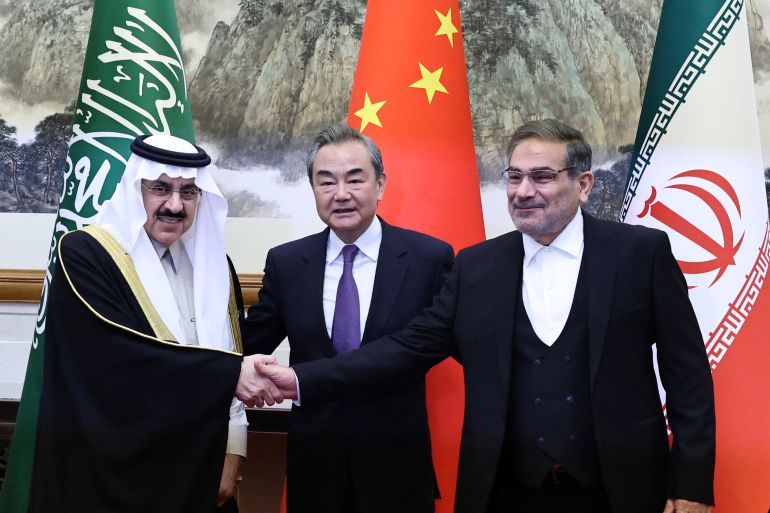
Then in October 2023 Hamas launched its attack on the Israeli occupation army and the colonial settler Zionist army responded with what quickly turned into a genocide of mainly Palestinian women and children.
Having just emerged from a U.S.-backed genocidal war and blockade by the Saudis, the Houthis/Ansarallah declared a blockade of Israeli ships through the Bab al-Mandab chokepoint. The U.S. intervened on Israel’s behalf and a full-fledged war between the U.S. and the Yemeni people began.
Where this war is heading depends on Israel, for the Houthis/Ansarallah have made it clear that they will lift all blockades once the genocide ends.
The U.S. has been exposed as being pretty much helpless to prevent the attacks on its allies’ shipping in this strategic region for both Europe and Asia through which their ships pass every day. Slowly the U.S. war on Yemen is turning into a quagmire for Pax Americana which can only respond in the language it knows best—brute force. More and heavier bombs killing more and more Yemenis as the U.S. war against Yemen slowly heats up.

CovertAction Magazine is made possible by subscriptions, orders and donations from readers like you.
Blow the Whistle on U.S. Imperialism
Click the whistle and donate
When you donate to CovertAction Magazine, you are supporting investigative journalism. Your contributions go directly to supporting the development, production, editing, and dissemination of the Magazine.
CovertAction Magazine does not receive corporate or government sponsorship. Yet, we hold a steadfast commitment to providing compensation for writers, editorial and technical support. Your support helps facilitate this compensation as well as increase the caliber of this work.
Please make a donation by clicking on the donate logo above and enter the amount and your credit or debit card information.
CovertAction Institute, Inc. (CAI) is a 501(c)(3) non-profit organization and your gift is tax-deductible for federal income purposes. CAI’s tax-exempt ID number is 87-2461683.
We sincerely thank you for your support.
Disclaimer: The contents of this article are the sole responsibility of the author(s). CovertAction Institute, Inc. (CAI), including its Board of Directors (BD), Editorial Board (EB), Advisory Board (AB), staff, volunteers and its projects (including CovertAction Magazine) are not responsible for any inaccurate or incorrect statement in this article. This article also does not necessarily represent the views the BD, the EB, the AB, staff, volunteers, or any members of its projects.
Differing viewpoints: CAM publishes articles with differing viewpoints in an effort to nurture vibrant debate and thoughtful critical analysis. Feel free to comment on the articles in the comment section and/or send your letters to the Editors, which we will publish in the Letters column.
Copyrighted Material: This web site may contain copyrighted material the use of which has not always been specifically authorized by the copyright owner. As a not-for-profit charitable organization incorporated in the State of New York, we are making such material available in an effort to advance the understanding of humanity’s problems and hopefully to help find solutions for those problems. We believe this constitutes a ‘fair use’ of any such copyrighted material as provided for in section 107 of the US Copyright Law. You can read more about ‘fair use’ and US Copyright Law at the Legal Information Institute of Cornell Law School.
Republishing: CovertAction Magazine (CAM) grants permission to cross-post CAM articles on not-for-profit community internet sites as long as the source is acknowledged together with a hyperlink to the original CovertAction Magazine article. Also, kindly let us know at info@CovertActionMagazine.com. For publication of CAM articles in print or other forms including commercial internet sites, contact: info@CovertActionMagazine.com.
By using this site, you agree to these terms above.
About the Author

Thomas C. Mountain is an educator and historian with over 40 years background in Africa.
He lived and reported from Eritrea from 2006-2021 and at one time was the most widely distributed independent journalist in Africa.
Follow him on X/twitter at thomascmountain. He is best reached at thomascmountain@gmail.com.

